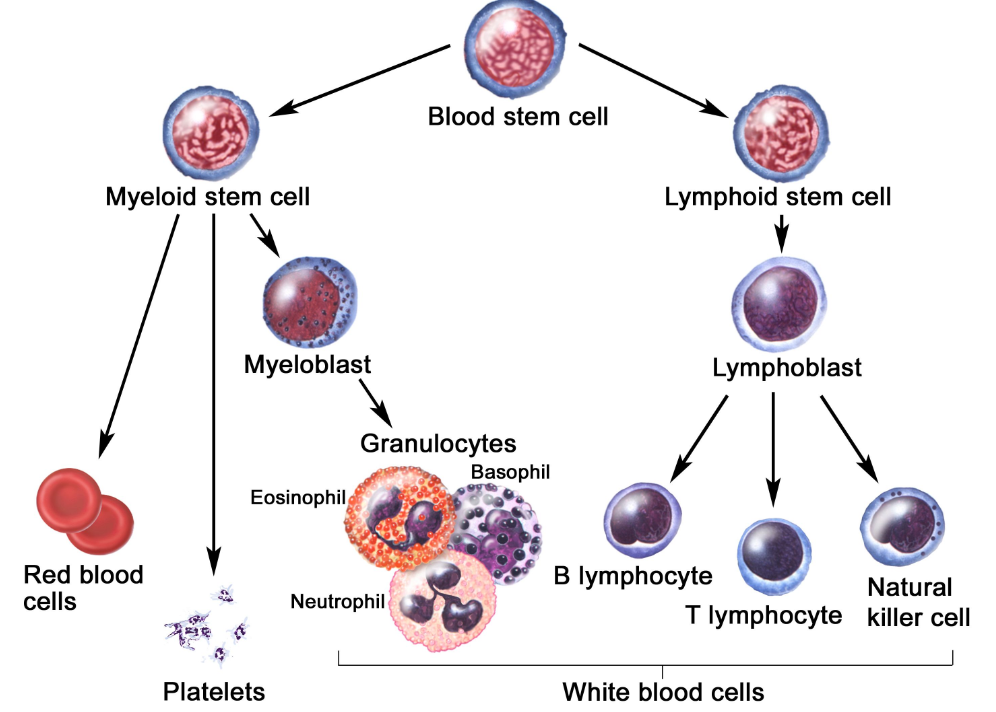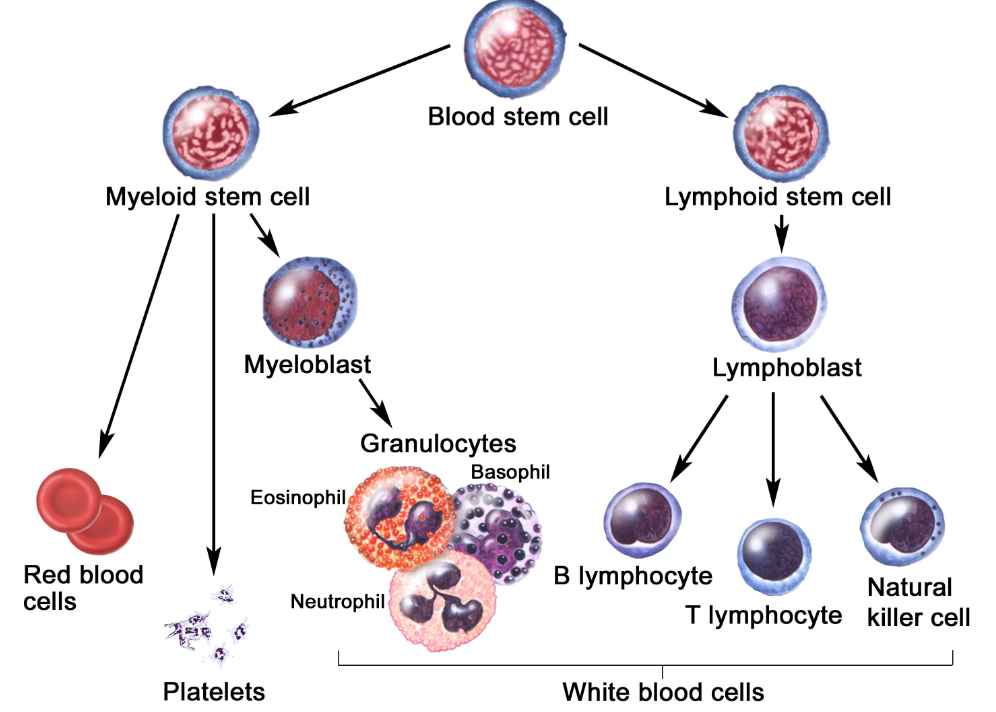White Blood Cells origin and functions in detail.
White blood cells (WBC) in our body have capability to produce protein molecules (Antibodies) up on infection of any kind of bacteria viruses or fungi, and solid dust particles, when they enter in to our body the WBCs start production of antibodies which are secreted in to blood, these antibodies bind to the pathogen bacteria viruses or fungi or the duct particle and try to destroy them by destruction of cell wall and their genetic material or simply prevent them from further multiplying so the growth of these pathogen is stopped and eventually the pathogens and foreign particles are eliminated. The WBC also recognize any malformed cancerous cells or any other foreign protein as an antigen, therefore the same protective immune response of production of antibodies against any kind of foreign protein or a dust particle or a cancerous cell or cancer cell proteins.
Therefore, the first line of defense mechanism against any cancer is already present in the human body in the form of a humoral immune system, imparted by white blood cells.
Antibodies have a specific orientation of their protein chain and the specific affinity sites on the antibody protein chain for the specific pathogen bacterial or viral particle or a cancerous cell or their protein molecules.
The primary objective of the antibody production is to eliminate the harmful antigens from the blood circulation and from body tissue by forming an antibody antigen complex. The pathogens and cancer cells and their proteins are ineffective when they are bound in the antibodies forming a complex.
In order to understand the process of immunity and immunology it’s very important to understand the function of WBCs. White blood cells are also called leukocytes or leucocytes.
White Blood Cells are classified in two categories based on their origin that is myeloid cells and lymphoid cells.
Blood cells are formed in the bone marrow from basal blood stem cells. Myeloid stem cells give rise to, myeloblast, which in turn produce granulocytes. Myeloid stem cells produce Red blood cells and white blood cells. Blood stem cells produce lymphoid cells which produce lymphoblast, lymphoblast produce T lymphocytes and B lymphocytes and Natural killer cells.
A) myeloid cells: neutrophils, eosinophils, mast cells, basophils, and monocytes.
Monocytes are further grouped into two types.
1) Dendritic cells 2) Macrophage.
B) lymphoid cells:
1) T-Cells: consist of the following three types 1) helper T cells, 2) Cytotoxic T cells and 3) Memory T cells.
2) B cells Consists of 1) plasma cells and 2) memory B cells
WBCs are divided into two groups based on their appearance
1) Granulocytes 2) Agranulocytes
Granulocytes are following white blood cells:
1) Neutrophils, 2) Eosinophils, 3) Basophils
Which WBC s are Agranulocytes
1) Neutrophils, 2) Eosinophils, 3) Basophils.
References: https://www.cdc.gov/me-cfs/pdfs/wichita-data-access/lab-tests-code.pdf


Leave a Reply